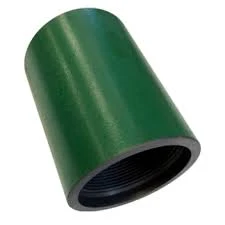- Afrikaans
- Albanian
- Amharic
- Arabic
- Armenian
- Azerbaijani
- Basque
- Belarusian
- Bengali
- Bosnian
- Bulgarian
- Catalan
- Cebuano
- Corsican
- Croatian
- Czech
- Danish
- Dutch
- English
- Esperanto
- Estonian
- Finnish
- French
- Frisian
- Galician
- Georgian
- German
- Greek
- Gujarati
- Haitian Creole
- hausa
- hawaiian
- Hebrew
- Hindi
- Miao
- Hungarian
- Icelandic
- igbo
- Indonesian
- irish
- Italian
- Japanese
- Javanese
- Kannada
- kazakh
- Khmer
- Rwandese
- Korean
- Kurdish
- Kyrgyz
- Lao
- Latin
- Latvian
- Lithuanian
- Luxembourgish
- Macedonian
- Malgashi
- Malay
- Malayalam
- Maltese
- Maori
- Marathi
- Mongolian
- Myanmar
- Nepali
- Norwegian
- Norwegian
- Occitan
- Pashto
- Persian
- Polish
- Portuguese
- Punjabi
- Romanian
- Russian
- Samoan
- Scottish Gaelic
- Serbian
- Sesotho
- Shona
- Sindhi
- Sinhala
- Slovak
- Slovenian
- Somali
- Spanish
- Sundanese
- Swahili
- Swedish
- Tagalog
- Tajik
- Tamil
- Tatar
- Telugu
- Thai
- Turkish
- Turkmen
- Ukrainian
- Urdu
- Uighur
- Uzbek
- Vietnamese
- Welsh
- Bantu
- Yiddish
- Yoruba
- Zulu
Casing Coupling Measurements and Specifications for Optimal Performance
Casing Coupling Dimensions Essential Insights for Oil and Gas Operations
In the oil and gas industry, effective drilling operations depend heavily on the equipment used, and one of the critical components in well construction is the casing. Casing serves to stabilize the wellbore, prevent contamination of groundwater, and facilitate the transportation of oil and gas to the surface. An essential aspect of casing is its coupling dimensions, which ensure proper connection between casing pipes. This article aims to delve into the significance, specifications, and impact of casing coupling dimensions on drilling efficiency and safety.
The Importance of Casing Couplings
Casing couplings are short pipe pieces that connect casing strings, allowing for flexibility and adaptability during the drilling process. The primary function of these couplings is to enable the connection of multiple casing sections, facilitating the control of wellbore stability and fluid flow. A well-designed coupling not only improves the mechanical integrity of the casing system but also plays a crucial role in preventing leaks and ensuring the overall safety of drilling operations.
Specifications and Standardization
Casing coupling dimensions are influenced by various factors including the type of casing used, the drilling environment, and regulatory standards. The American Petroleum Institute (API) provides the guidelines that outline the acceptable dimensions and specifications for casing couplings. These specifications detail critical dimensions such as the outer diameter, wall thickness, and thread type, which are essential for ensuring that couplings can withstand the harsh conditions found in subsurface environments.
For instance, API specification 5B defines the standards for the couplings used in casing, which encompasses both the physical dimensions and the performance criteria. The outer diameter of the coupling typically matches the outer diameter of the casing, facilitating a snug fit and a secure connection. Additionally, the coupling must have threaded ends that correspond to the threads on the casing pipes, ensuring a seamless connection that can handle the stresses encountered during drilling operations.
casing coupling dimensions

Impact on Drilling Efficiency
Accurate casing coupling dimensions directly impact drilling efficiency. The assembly and disassembly of casing strings require precision; if dimensions are not adhered to, it can result in complications during installation, leading to delays and increased costs. Misalignment or improper connections can cause excessive wear on both the casing and the drilling equipment, potentially leading to equipment failure, costly repairs, and a significant loss of time.
Moreover, poorly designed or manufactured couplings can lead to compromises in pressure integrity, especially in high-pressure wells. A reliable coupling must be able to withstand various forces, including tensile, compressive, and bending stresses. If a coupling fails under pressure, it can result in catastrophic events, such as blowouts, which pose significant risks to both personnel and the environment.
Conclusion
In conclusion, casing coupling dimensions play a pivotal role in the safety and efficiency of oil and gas drilling operations. Proper adherence to specifications not only ensures mechanical stability but also promotes effective communication between different parts of the drilling system. The importance of standardization and precision in coupling dimensions cannot be overstated—these elements are foundational to the success and safety of drilling projects.
As the industry continues to advance technologically, the emphasis on high-quality materials and precise manufacturing processes will remain paramount. Continuous research and development in coupling design will further enhance the effectiveness of casings in various drilling environments, leading to improved safety, efficiency, and productivity in oil and gas operations. Understanding and utilizing appropriate casing coupling dimensions will remain an essential practice in achieving operational excellence in this challenging yet rewarding industry.
-
Tubing Pup Joints: Essential Components for Oil and Gas OperationsNewsJul.10,2025
-
Pup Joints: Essential Components for Reliable Drilling OperationsNewsJul.10,2025
-
Pipe Couplings: Connecting Your World EfficientlyNewsJul.10,2025
-
Mastering Oilfield Operations with Quality Tubing and CasingNewsJul.10,2025
-
High-Quality Casing Couplings for Every NeedNewsJul.10,2025
-
Boost Your Drilling Efficiency with Premium Crossover Tools & Seating NipplesNewsJul.10,2025







